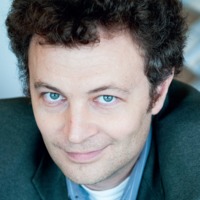
Darin N Stephanov
I am a multi-year research grant holder of the Kone Foundation (Helsinki), Finland's largest private foundation. The project's title is "Ruler Visibility, Public Space/Sphere, and Collective Identities in the Late Russian and Ottoman Empires. A Finnish-Bulgarian Comparison." Prior appointments include being a guest researcher at Aarhus University's Islamic Cultures and Societies Research Unit in Aarhus, Denmark, a Marie Curie COFUND Junior Fellow at the Aarhus Institute of Advanced Studies, a Fellow at the Helsinki Collegium for Advanced Studies, a postdoctoral researcher for the Academy of Finland Project "Political Power in the Early Modern European and Islamic Worlds", and coordinator of the Nordic Exploratory Workshops “Eurasian Empires, Public Space/Sphere, and Collective Identities at the Threshold of Modernity,” University of Jyväskylä, Finland. I hold degrees from Harvard, the Central European University, the University of California (Los Angeles), and the University of Memphis. My scholarship combines a commitment to macro-historical issues of group mentality formation with a dedication to micro-historical methods of close textual analysis. My present research interest in comparative (Ottoman and Russian) empire, especially in ruler visibility, public space and popular forms of belonging, has led to a new model of the modern/ethno-national mindset with a wide range of potential applications across the globe. I have taught at UCLA, the University of Memphis, the University of Helsinki, and the University of Jyväskylä.
less
InterestsView All (25)
Uploads
Papers by Darin N Stephanov
age, not only in Russia, but across the world.
age, not only in Russia, but across the world.
Travel memoirs alongside archival and antiquarian documents, as well as geographic and military texts are valuable sources for this kind of investigation. Other important information comes from studies concerning the history of European collections of antiquities as well as the biographies of European ambassadors who operated in the areas in question in the nineteenth and early twentieth centuries (Stratford Canning, Charles Newton, Charles Champoiseau, Henry Layard, among others). Facts, anecdotes, and stories related to more or less well-known ancient artefacts and discoveries at that time, will offer paradigmatic examples on this topic.
Of central interest is the dynamics of transformation of pre-modern identifications and their incorporation into a novel, modern outlook, viewed through the prism of changing notions of sovereignty, legitimacy, and cultural worth.
“History of Consumer Culture: Objects, Desire and Sociability” Conference
23-25 March 2017, Gakushuin University, Tokyo, JAPAN